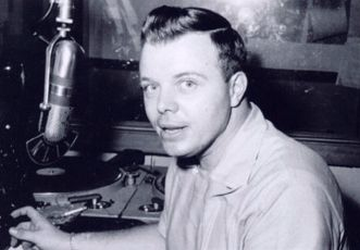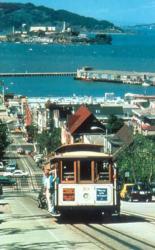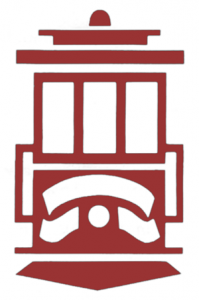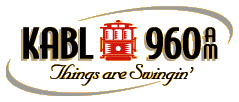“The Miracle By the Bay … KABL”
By Don Keyes

As national program director, Don Keyes (photo, left) oversaw the programming operations for all of the McLendon Stations from 1957 to 1966. These legendary radio stations included KLIF, Dallas-Fort Worth; KILT, Houston; KTSA, San Antonio; KEEL, Shreveport; WYSL, Buffalo; KABL, San Francisco; WYNR (later WNUS) Chicago; XTRA News, Los Angeles; WAKY Louisville; and KADS (later KOST) Los Angeles.

In the second chapter of his memoir, “Gordon McLendon and Me,” he explained the genesis of McLendon’s acquisition of Oakland’s KROW, which was transformed into the legendary KABL. A member of the Texas Radio Hall of Fame, Mr. Keyes passed away in January 2006 at the age of 74.
By 1959, Gordon had set a pattern for buying stations. It had to be in a major market, the price had to be right and it must be either mid-dial or low on the dial with at least 5000 watts. Also, the market must have a viable program niche for us to fill. KTSA, KILT, KEEL, WAKY and others pretty much met the criteria. Then, suddenly, along came KROW at 960 on the dial with 5000 watts licensed to Oakland, California, with a signal that covered San Francisco and the entire Bay Area.
With my old trusty Zenith Transoceanic portable (which weighed a ton) we headed for the airport with packed bags. As the cab ride to the Fairmont ticked off the fare we both fell in love with this beautiful city by the bay. The whole area reeked with charm. Flower stalls on Union Square, the Tonga Maru snugging into the pier loaded with tea and teak from Thailand. The Oakland Bay Bridge leapfrogging across the bay. The tantalizing fragrance of Chinese cuisine in Chinatown. Coffee shops in North Beach. The absolutely breathtaking Cinemascope view from Twin Peaks. Gordon wanted a radio station in this city and I felt the same.

We repaired to our suite and got out the yellow pads. For two days we swept the Zenith dial back and forth making copious notes. And frankly, we were somewhat chagrinned to find no fewer than five Top 40 formats alive and kicking. If memory serves me we were confronted with KFRC, KOBY, KEWB and of course, “Carefree and Gay KYA, the Voice of the Bay.”
Since our forte until this point was Top 40 programming, we concluded after some detailed monitoring that we could put a superior Top 40 station on the air but then the question arose: would the general public notice the marginal difference and flock to 960 khz.? Sadly, our combined answer was “No.”
After a few vodkas to ease the pain of our decision, we went out to dinner at Ernie’s.
Next day at breakfast, feeling refreshed from a good rest, we started talking about a station back in Dallas owned by our friendly competitor, Lee Segall. It was a low-powered daytimer called KIXL. The local folks called it “Kicks-ul” and it was a Beautiful Music station, [a format] which later became known as Easy Listening.
 I don’t recall the Hooper rating numbers in those days but KIXL was listened to in homes all through the affluent areas of Dallas until it signed off at sunset. Coincidentally, we used to gig Lee Segall a little bit with a station ID we ran on KLIF which said that we were ”the station that doesn’t run down at sundown.”
I don’t recall the Hooper rating numbers in those days but KIXL was listened to in homes all through the affluent areas of Dallas until it signed off at sunset. Coincidentally, we used to gig Lee Segall a little bit with a station ID we ran on KLIF which said that we were ”the station that doesn’t run down at sundown.”
Then that great fertile mind kicked into gear as Gordon mused, “Say, what if we took the basic KIXL format, gussied it up a little bit and added the promotions for which we’re known and just surprised the hell out of everybody? And while we’re at it, forget the KROW call sign and name it KABL after San Francisco’s quaint, colorful cable cars?”
And so it was. We flew back to Dallas and met with Lee Segall, who, with his charming wife, Dutch, couldn’t have been more gracious. During that evening visit in their home, Lee gave us the key to KIXL: The Music Format. It was absurdly simple and contained only two major points. One, the music must be familiar — in our case, familiar to Gordon — and two, it was formatted into quarter-hour segments that simply repeated every fifteen minutes. Not the songs themselves, but the arranging.
 For example, Category One opened the segment, a rich, full instrumental such as The Boston Pops playing “I Could Have Danced All Night.” Category Two followed, which was a small instrumental group such as The Three Suns with “Tenderly.” Category Three was vocals like Robert Goulet singing “Some Enchanted Evening,” which segued into Category Four which Lee called “Tempo Break Up,” which may have been the Xavier Cugat Band with “Blame It On The Bossa Nova.” I started assembling the music as Gordon and his Dad negotiated with the seller. I also began hiring air staff consisting of old school, heavy-voiced announcers.
For example, Category One opened the segment, a rich, full instrumental such as The Boston Pops playing “I Could Have Danced All Night.” Category Two followed, which was a small instrumental group such as The Three Suns with “Tenderly.” Category Three was vocals like Robert Goulet singing “Some Enchanted Evening,” which segued into Category Four which Lee called “Tempo Break Up,” which may have been the Xavier Cugat Band with “Blame It On The Bossa Nova.” I started assembling the music as Gordon and his Dad negotiated with the seller. I also began hiring air staff consisting of old school, heavy-voiced announcers.
As was our practice in other markets we began playing a really objectionable record for three days straight. This particular record was “The Gila Monster” taken from one of Gordon’s home-made horror movies, “The Giant Gila Monster,” which has developed a cult following on obscure cable TV channels over the years.
After three days of this madness, we broke with the new easy listening KABL format on the beginning of the fourth day. In three months we checked in as number one in the ratings, not because the format was that good, although it was. The fact remained that the biggest audience, Top 40, was splintered and splattered all over the dial. We were number one by default! However, we didn’t remain number one, but throughout KABL’s history we were always in the top five or ten and the station with its appeal to affluent San Franciscans made tons of money.
I wish I could claim authorship for KABL but it was really the combined efforts of several people. Among them, Gordon, Lee Segall, Charlie Payne, Dave McKinsey and myself. As a creative type, a programmer, I can say that KABL was the most aesthetically pleasing format I’d ever been associated with. It was an artistic joy to listen to.

There are very few Easy Listening stations around today because agencies are enamored over the 25 to 54 audience and the Easy Listening audience skews much older. And I never have been able to find an agency person who can tell me what a 25-year-old woman has in common with a 54-year-old woman. It’s sad.
So that’s the story of KABL — how McLendon shocked the San Francisco Top 40 operators who were already girding their loins for a bitter struggle. I can only imagine their relief!
But there’s a sad footnote to the KABL story. Many operators had been following the story and when KABL, an Easy Listening station, came out Number One, some of these operators said “Let us do likewise.” They did, and fell flat. They did not do their homework. They did not have five Top 40s in their markets and they did not have that remarkable town of erudite, cultured people who formed the nucleus of San Francisco, a city very much in love with itself.
KABL was my favorite station in the chain and my bags stayed packed so that when in the coming years Gordon would say “Big Don, I think you better run out to San Francisco,” I was on my way to the taxi stand.
Related Articles:

Don Keyes hired me as a DJ at Kilt, Houston in 1959. He facilitated my request to join KABL as Morning Man in January, 1960. I still have the telegram saying how pleased he was at the decision. I spent the next 33 years in the “Morning Air. . .Everywhere!”
Bill Moen
Hiring Bill Moen was a great choice! Bill Moen is well loved and admired.